#porcelain crab
Text
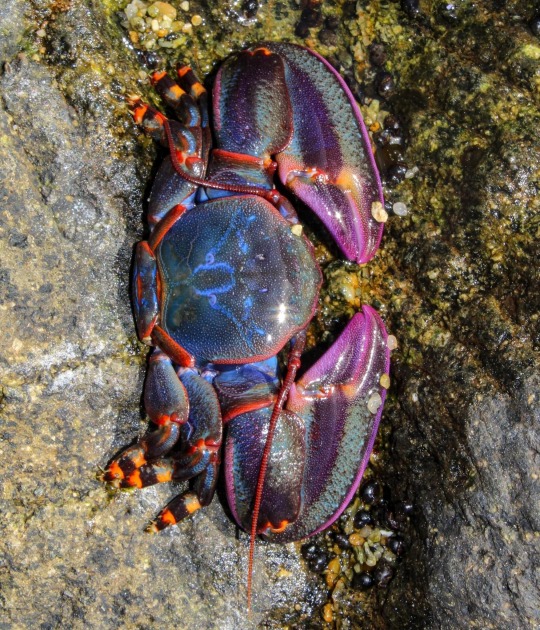
Porcelain Crab, Petrolisthes violaceus, family Porcellanidae, coast of Chile
Photograph by matias_saa
4K notes
·
View notes
Photo

A porcelain crab (Neopetrolisthes maculatus) sits on an anemone near Ambon Island, Indonesia
by Iain Fraser
#porcelain crab#crabs#crustaceans#anemones#cnidaria#Neopetrolisthes maculatus#Neopetrolisthes#Porcellanidae#decapoda#Malacostraca#crustacea#arthropoda#wildlife: indonesia
270 notes
·
View notes
Text

Today's crab is: tiny but mighty
172 notes
·
View notes
Text
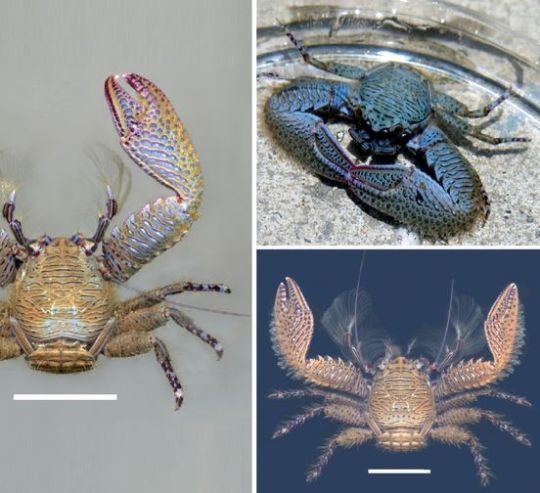
Description of a new species of the Petrolisthes galathinus complex from the Caribbean Sea, and resurrection of Petrolisthes occidentalis from the East Pacific (Crustacea, Anomura, Porcellanidae)
Alexandra Hiller, Bernd Werding
Abstract
The Petrolisthes galathinus complex currently consists of six American species distributed in the West Atlantic, including the amphi-American P. galathinus.
All species in the complex are similar in their adult morphology but differ in colour, size, larval morphology, and shape of the adult sternal plate.
The West Atlantic species have different geographic ranges, which overlap in the southern Caribbean. Previously published molecular data support the monophyly of the complex, and the reciprocal monophyly of each described species and further clades corresponding to different colour morphs.
Here, the morph P. caribensis “Blue” is described as Petrolisthes coeruleus sp. nov., and Petrolisthes occidentalis is formally resurrected for the Pacific individuals of P. galathinus.
By adding these two species to the P. galathinus complex, this now consists of eight species. Colour illustrations of all species and colour morphs are provided and their geographic distributions and ecological ranges are discussed and updated.
Read the paper here:
Description of a new species of the Petrolisthes galathinus complex from the Caribbean Sea, and resurrection of Petrolisthes occidentalis from the East Pacific (Crustacea, Anomura, Porcellanidae) (pensoft.net)
14 notes
·
View notes
Text
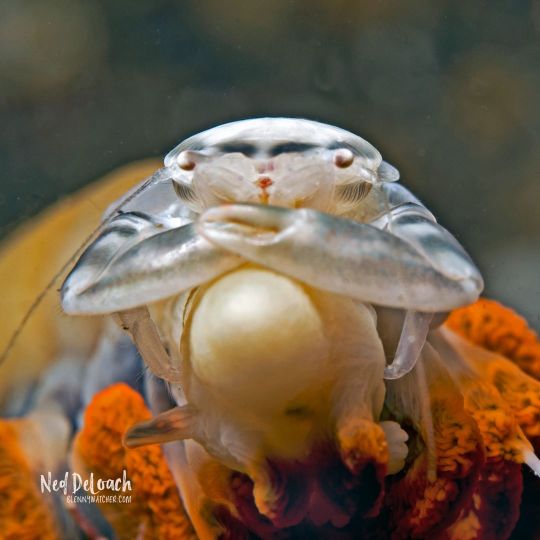
Three-lobed Porcelain Crab
#three lobed porcelain crab#porcelain crab#crab#Porcellanella triloba#Malacostraca#Decapoda#Pleocyemata#Anomura#Galatheoidea#Porcellanidae#Porcellanella#upl
4 notes
·
View notes
Text

Chancellor Finis Valorum /petrolisthes violaceus
Not only did I choose this crustacean for its striking coloration, which resembles Valorum’s robe, but bc petrolisthes is a genus of porcelain crabs. Which (like the name suggests) are very delicate.

"If I may say so, Your Majesty, the Chancellor has little real power..” -Senator Palpatine
Porcelain crabs easily break apart, dropping their limbs to distract predators.
“He is mired by baseless accusations of corruption. The bureaucrats are in charge now.” - Sanator Palpatine continued
Because they inhabit tide pools and stony crevasses they can be easily stepped on/trampled.
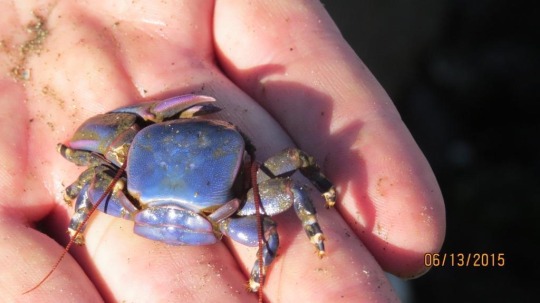


33 notes
·
View notes
Text
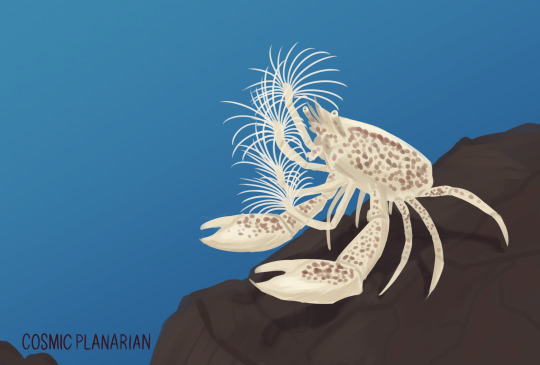
100 Days of Sea Creatures Day 67 - Porcelain Crab (Neopetrolisthes maculatus)
#artists on tumblr#artists on instagram#drawing challenge#sea creature art#drawing daily#sea creatures#crab#crabs#porcelain crab#carcinization
3 notes
·
View notes
Text
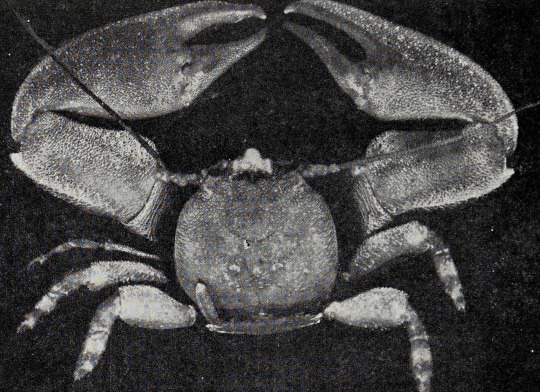
Porcelain crab
By: Unknown photographer
From: Natural History of Marine Animals
1949
17 notes
·
View notes
Text

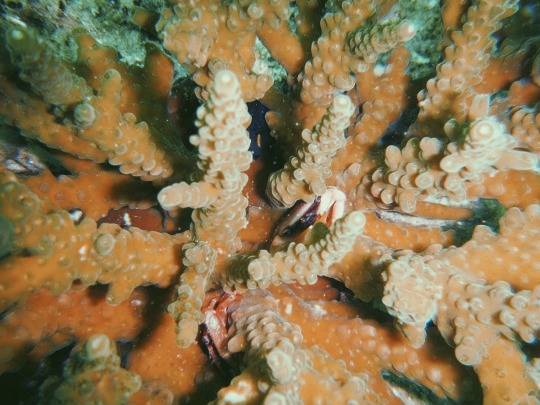

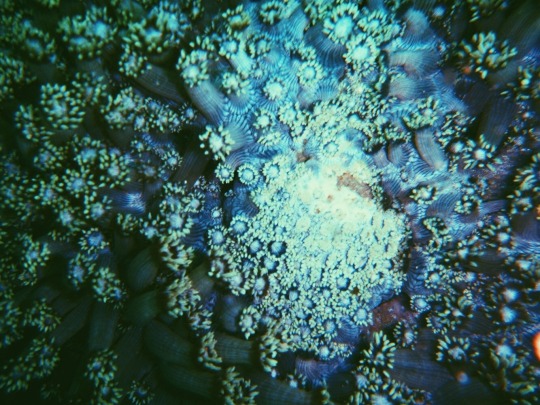
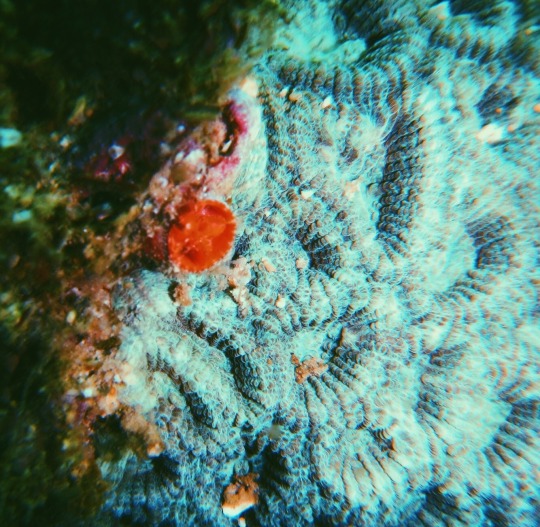

textures of the Arabian Sea
#personal photography#indian ocean#marine biology#crab#porcelain crab#coral#coral reef#arabian sea#oman#fujairah#ocean#underwater
30 notes
·
View notes
Photo
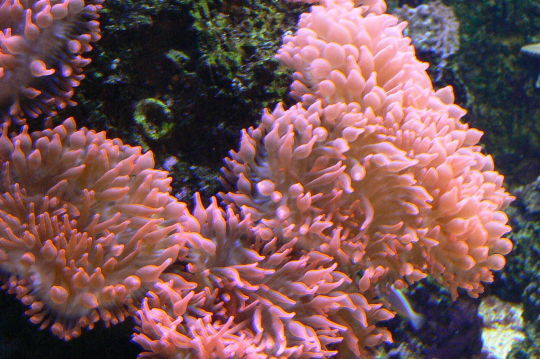
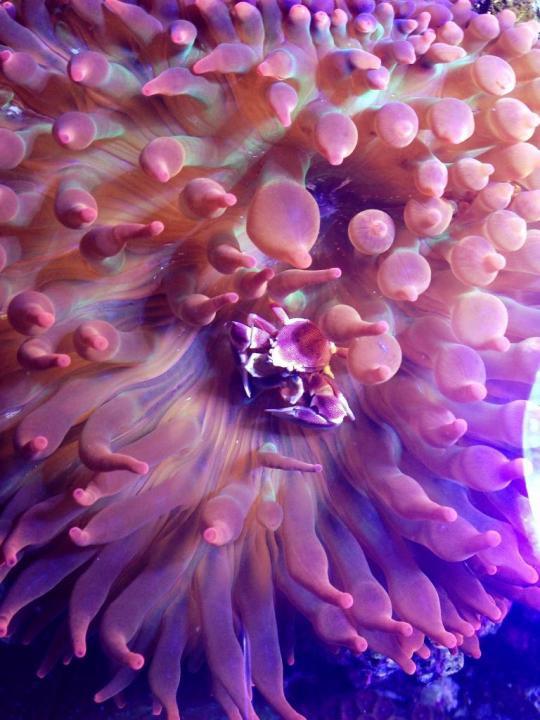


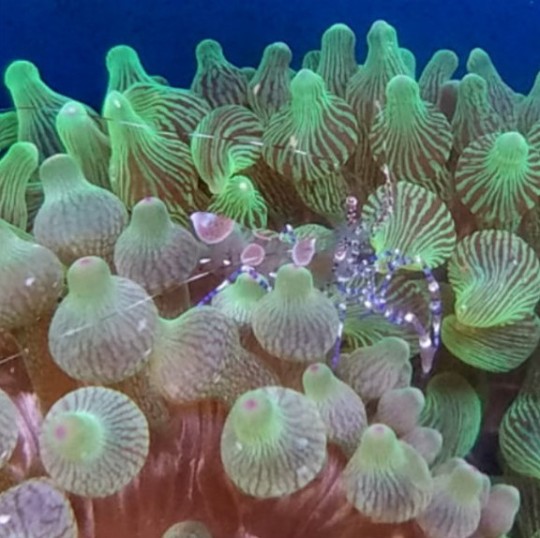


The Bubble-tip anemone (Entacmaea quadricolor) is a species of sea anemone in the family Actiniidae which is native to the tropical waters of the Indian and Pacific Oceans being found in particular abundance in the Red Sea. In the wild, E. quadricolor are found in two locations. Large adult specimens, with tentacles that are more streaming or stringy, are often found in deeper waters with more dimly lit conditions. These specimens are often solitary, while smaller, younger specimens are often located in groups or colonies nearer to the surface, in bright sunlight. These specimens tend to show the bulbous tips on their tentacles that are characteristic of E. quadricolor. A characteristic of E. quadricolor is its ability to maintain a symbiotic relationship with anemonefish, anemone shrimp, porcelain crabs, and domino damsels which can be "hosted" by the anemone by providing it with defence against predators and also providing some nourishment. In turn, the anemone provides the fish/ crustacean with shelter. These anemones get the majority of there energy from from solar radiation via its symbiotic zooxanthellae, and can also obtain nutrients by filter feeding using its sweeping tentacles, or through wastes and debris cleaned from the surface of its partner fish/ crustacean. E. quadricolor anemones appear in a variety of colors including rose, orange, red, and green. This sea anemone can grow to be up to nearly a foot in diameter. There breeding season lasts from January to april during such time they broad cast spawn, with each anemone releasing its gametes into the water column to join with others and form free-swimming planula larvae which remain in the open water for up to 59 days before settling down on the sea floor to grow into there adult form. They can also reproduce asexually using longitudinal fission. Under ideal conditions a bubble tip anemone may live several hundred years.
#bubble tip anemone#bubble tipped anemone#clownfish#clown#fish#shrimp#crab#rose#orange#blaze#green#porcelain#porcelain crab#anemonefish#anemone shrimp#maroon#tomato#tomato clownfish#maroon clownfish#ocean#pleistocene#pleistocene pride#holocene#pliestocene#pliestocene pride#reef
3 notes
·
View notes
Text


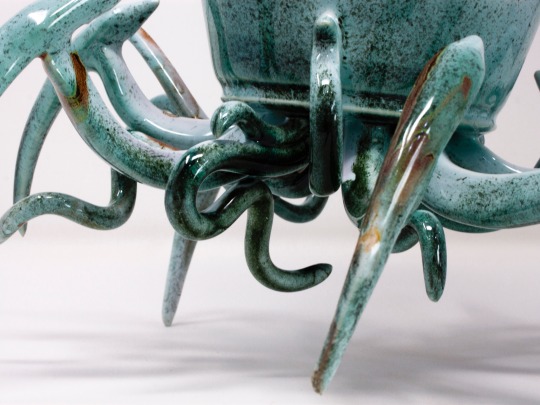


They evolving
Crawer Pot, Porcelain, 2023
6K notes
·
View notes
Text




Zodiac mug : Cancer
#zodiac#zodiac mug#mugshot monday#mug collection#ceramics#artoftheday#handmade#art#porcelain#cute#pottery#illustration#crab#cancer constellation#cancer sign
1K notes
·
View notes
Text

Inktober Day 25
Learned that Porcelain Crabs existed and just had to.
#hyydraworks#traditional art#illustration#watercolor#crab#time for crab#porcelain#creature art#watercolor painting
454 notes
·
View notes
Text

Today's crab is: skipping leg day
148 notes
·
View notes
Text
Невероятно притягательный фарфоровый краб.
Incredibly attractive porcelain crab.

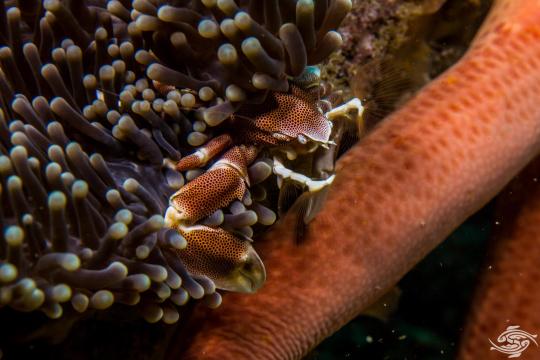
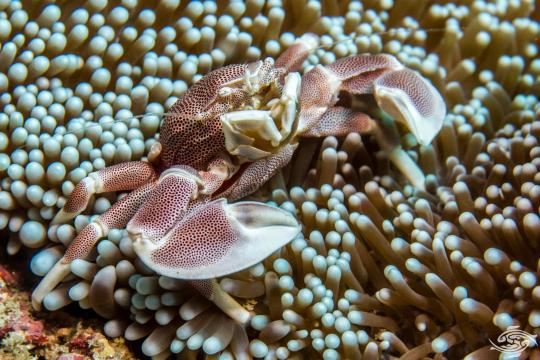

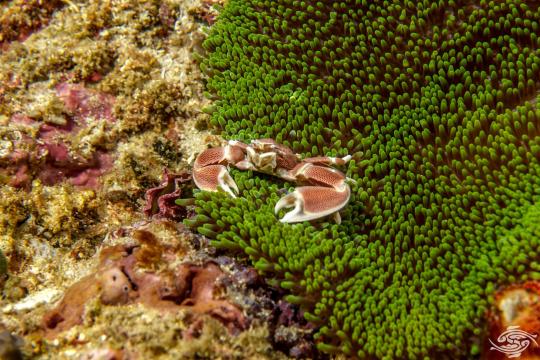

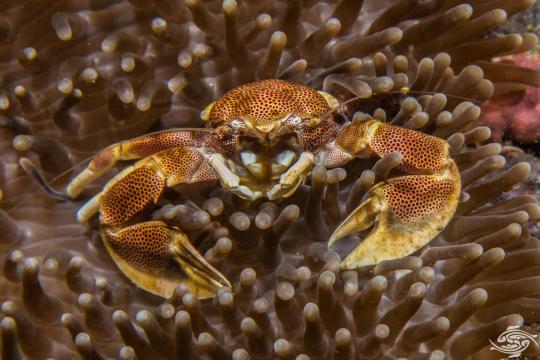
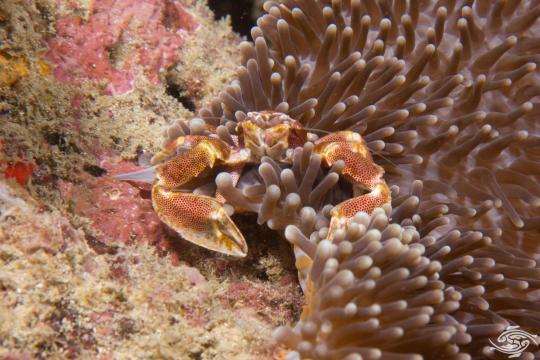


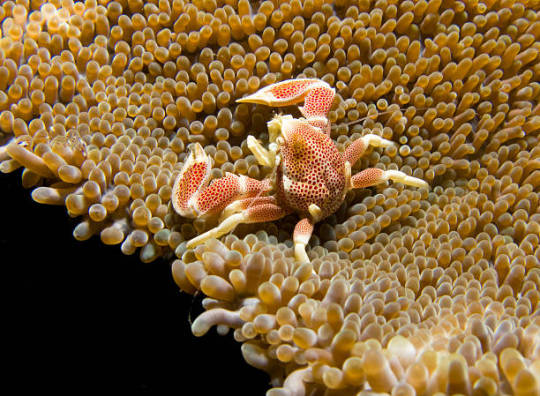
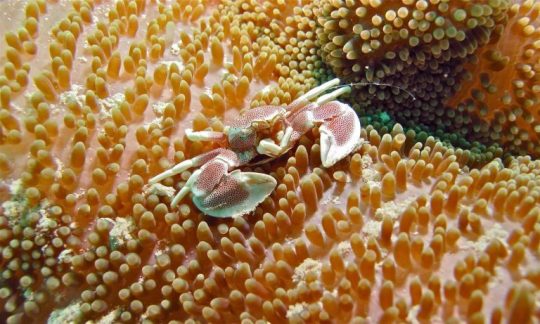
АНЕМОНОВЫЙ ФАРФОРОВЫЙ КРАБ (Neopetrolisthes ohshimai, Neopetrolisthes maculatus) или фарфоровый пятнистый краб.
Данный вид краба имеет небольшие размеры около 2. 5 см.Что касается его названия, то на этот счет существует две версии. Первая гласит, что фарфоровыми крабами их назвали потому, что они чрезвычайно хрупкие, а такие части тела, как ноги и клешни, легко отламываются.Вторая указывает на белый цвет тела и конечностей краба, которые напоминают фарфор.
Анемоновый фарфоровый краб относится к организмам – фильтраторам, он поглощает планктон из воды. Эти крабы территориальные хищники. Они обычно встречаются парами среди актиний.Данный вид крабов проявляет агрессивные действия по отношению к другим видам ракообразных, сопоставимых по размерам тела, но не атакует более крупных особей. Анемоновые фарфоровые крабы защищают свою территорию также от рыб, которые появляются среди актиний в поисках пищи. Обычно рыбы – клоуны плавают стаями и, хотя они не очень агрессивные, анемоновые крабы нападают на конкурентов.
Анемоновый фарфоровый краб распространяется по побережью Тихого и Индийского океанов. Краб обитает в симбиозе с актинией, он держится или на каменистом субстрате, или среди щупалец анемона, который захватывает мелкую рыбу, червей, рачков. Хотя этот вид крабов приспособился обитать и без анемона- среди камней и кораллов.
ANEMONE PORCELAIN CRAB (Neopetrolisthes ohshimai, Neopetrolisthes maculatus) or porcelain spotted crab. This type of crab has a small size of about 2.5 cm. As for its name, there are two versions on this matter. The first says that they were named porcelain crabs because they are extremely fragile, and body parts such as legs and claws break off easily. The second indicates the white color of the crab's body and limbs, which resemble porcelain.
The anemone porcelain crab is a filter feeder; it absorbs plankton from the water. These crabs are territorial predators. They are usually found in pairs among sea anemones. This type of crab exhibits aggressive actions towards other species of crustaceans of comparable body size, but does not attack larger individuals. Anemone porcelain crabs also defend their territory from fish that appear among the sea anemones in search of food. Typically, clownfish swim in schools and, although they are not very aggressive, anemone crabs attack competitors.
The anemone porcelain crab is distributed along the coast of the Pacific and Indian oceans. The crab lives in symbiosis with sea anemone; it rests either on a rocky substrate or among the tentacles of an anemone, which captures small fish, worms, and crustaceans. Although this type of crab has adapted to live without anemone, among stones and corals.
Источник:https://t.me/+t0G9OYaBjn9kNTBi,
/fragbox.ca/product/porcelain-crab/,/dzen.ru/b/ZSeYn3Kcezop2Edd
/seaunseen.com/porcelain-anemone-crab/, /animalreader.ru/anemonovyj-farforovyj-krab-foto.html,
seaforum.aqualogo.ru/topic/54097-краб-анемоновый-пятнистый-neopetrolisthes-maculatus/.
#video#animal video#marine life#marine biology#nature#aquatic animals#crustaceans#porcelain spotted crab#underwater#ocean view#ocean#reef#sea anemones#clown fish#animal photography#nature aesthetic#видео#фауна#природнаякрасота#природа#океан#ракообразные#краб#риф#актинии#анемон#рыбка клоун
154 notes
·
View notes
Text

腕がタカラガイみたい
@東海大学海洋科学博物館
A hermit crab with arms like cowries
@Marine Science Museum, TOKAI University
#アカホシカニダマシ#Neopetrolisthes maculatus#Red spotted porcelain crab#crab#hermit crab#crustacean#東海大学海洋科学博物館
60 notes
·
View notes